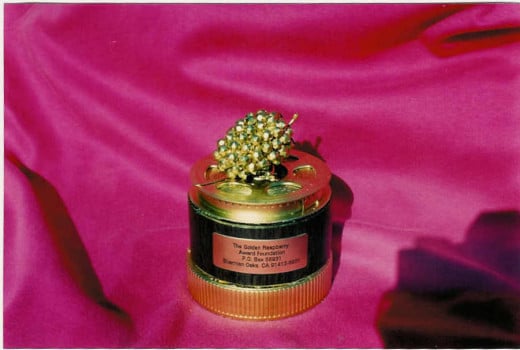History of the Golden Raspberry Awards
Razzie Trophy

One man’s humored idea to entertain a hall full of guests turned out to bring prime time entertainment to an entire nation. John JB Wilson, creator of the Raspberry Awards or Razzies for short, habitually hosted potluck dinner parties out of his Los Angeles home on the nights of the Academy Awards. Wilson, who was a copywriter and publicist by profession seeked to entertain guests after the show by replicating the purpose of the Academy Awards-only this time, highlighting the worst, the bad and the ugly of Hollywood’s movies, directors, actors or actresses, supporting actors or actresses, screen plays, screen couples and prequels or sequels.
Wilson was pushed to formalize the event in 1981 after viewing a double feature of Alan Carr’s “Can’t stop the music” and “Xandu”. Upon completion of the 53rd staging of the Academy Awards, Wilson had invited friends to participate in award presentations in his living room in honor of the worst movies or actors of that year. Each was presented with a ballot to vote for the worst film. To augment the humor surrounding the ceremony, John JB Wilson presented himself behind a podium made from cardboard, a frumpy tuxedo to reflect the quality of the nominees with an improvisable microphone made from a broom stick and a foam ball on top. The event was graced with about three dozen invitees who witnessed “Can’t stop the music” being presented the first Razzie award for worst picture. Equally amusing is the $4.97 US estimated value of the Razzie trophy-a spray painted gold raspberry which sits atop a black plastic base.
Its initial staging was a success an even gained some minor publicity from mentions in local newspapers. By its fourth staging, it started to get more press coverage namely from BBC and CNN, especially since it was rescheduled to a day before the Academy Awards. A quote from Wilson to BBC news stated “We finally figured out we can’t compete with the Oscars on Oscar nights, but if you went the day before, when the press from all over the world are here and they are looking for something to do, it could well catch on”. This may very well be the secret behind its treasured success.
Today the Golden Raspberry Awards is 31 years old and like wine, has matured with age significantly with viewership, publicity and stature-thanks to the paid members of the Golden Raspberry Foundation (GRAF) who voted to determine the offenders of the film industry. Often times, these members include; journalists, cinema fans and industry experts who hail from over 19 countries.








